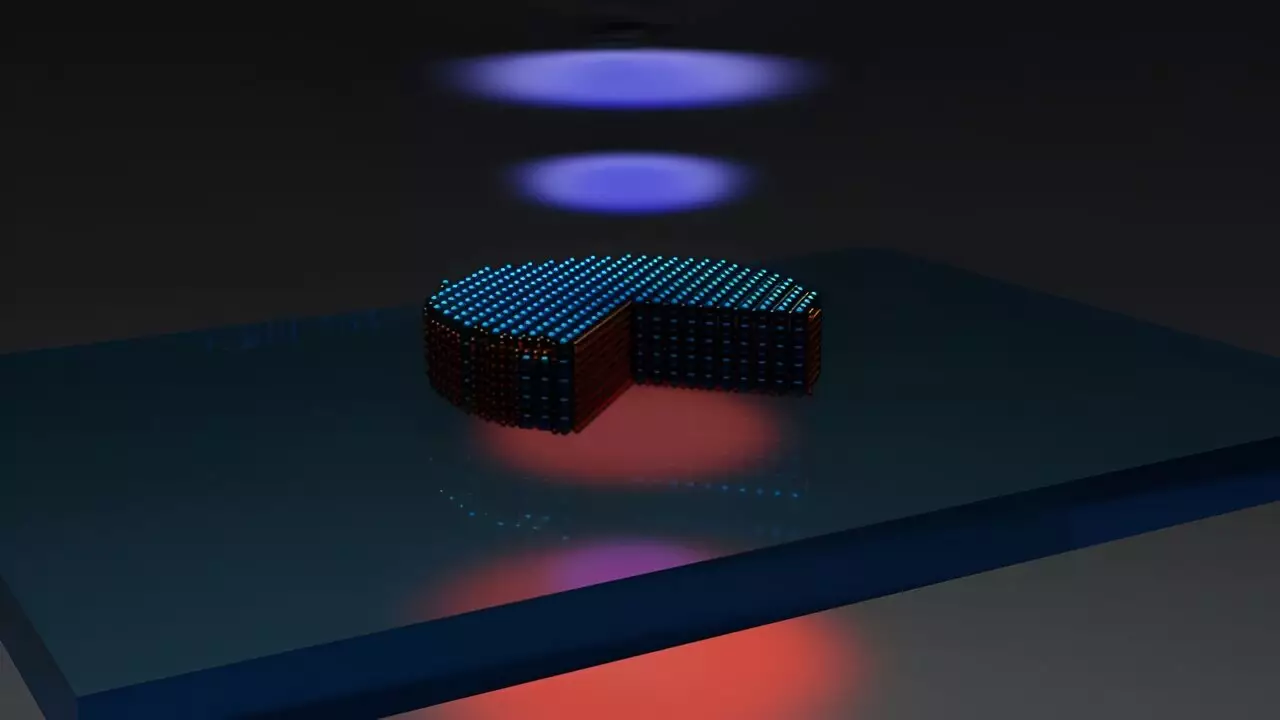Nanophotonics, the study of light at the nanoscale, represents a fascinating realm where the interaction of light and matter gives rise to innovative applications that reshape technology. From revolutionizing communication systems to enhancing diagnostic capabilities in medicine, the potential of photonic technologies continues to expand. Recent advancements at Chalmers University of Technology push these boundaries even further by merging nonlinear optics with high-index nanophotonics within a minuscule disk-like structure.
The synergy between these two fields addresses fundamental challenges, paving the way for new phenomena that exploit light in unprecedented ways. As these researchers delve deeper into the interactions between photon states and materials, they uncover new possibilities that can redefine optical devices for both classical and quantum applications.
Led by Dr. Georgii Zograf, the groundbreaking research published in *Nature Photonics* reveals an innovative method of creating a disk-shaped nanostructure that is astonishingly smaller than the wavelength of light. This nanodisk boasts a remarkable efficiency in converting light frequencies—up to 10,000 times greater than its unstructured counterparts. The implications of such efficiency cannot be overstated, suggesting a transformative leap in how we understand and utilize nanostructured materials.
At the core of this achievement is the use of transition metal dichalcogenides (TMDs), specifically molybdenum disulfide (MoS2). This atomically thin material possesses exceptional optical characteristics at ambient temperatures but poses significant challenges for practical applications. The crystalline structure of TMDs often results in a loss of nonlinearity when stacked conventionally. However, the researchers successfully fabricated a nanodisk that preserves the delicate balance of symmetry necessary for maintaining its nonlinear optical properties.
What sets this research apart is the structure’s ability to retain and even enhance the nonlinear properties of each stacked layer, a significant achievement in nanomaterial engineering. Dr. Zograf emphasizes that creating a nanodisk capable of preserving broken inverse symmetry is the crucial factor in realizing its high efficiency and functionality. The outcome is not merely a theoretical exploration; it presents tangible advancements that could open new avenues for optical technology.
The high refractive index of the TMD material ensures that light can be more effectively coupled and compressed within this novel medium. The capacity for localized electromagnetic field generation also leads to the production of doubled frequency light via a nonlinear optical process known as second-harmonic generation. This phenomenon is essential for practical applications, similar to how sum- and difference-frequency generation underpins high-energy laser systems.
The compact dimensions of the nanodisk—approximately 50 nanometers—are milestone achievements when contrasted with conventional systems, which often span centimeters. This remarkable reduction in size means that the integration of nonlinear optical technologies is not only feasible but could also pave the way for the development of ultra-compact optical circuits and devices.
As Professor Timur Shegai notes, the unique properties of these TMD-based structures hold promise for transforming various fields within photonics, including the creation of metasurfaces and nanodisk arrays that can significantly enhance the efficiency of optical applications. This research stands at the precipice of unlocking broader applications, allowing for innovations that could touch every aspect of optical technology.
Looking to the future, the researchers envision a diverse array of applications arising from their findings, from nonlinear optics to the generation of entangled photon pairs. The potential for integrating these nanodisks into various optical modules hints at a future where classical and quantum experiments can occur on a scale previously thought impossible.
Though the journey is only beginning, the implications are profound. Innovations emerging from this research could lead to significant advancements in telecommunications, biomedical devices, and a host of other industries reliant on precise optical manipulation.
The research conducted by the team at Chalmers University signifies a potent moment in the evolution of photonics. The innovative design and synthesis of a nonlinear, high-index nanodisk mark a crucial step towards realizing smaller, more efficient optical devices. As this research continues to unfold, it brings us closer to harnessing the transformative powers of nanotechnology and photonics to redefine our technological landscape. As we stand on the cusp of these advancements, the excitement for future research and its myriad applications is palpable, heralding a new era in the interaction between light and matter.


Leave a Reply